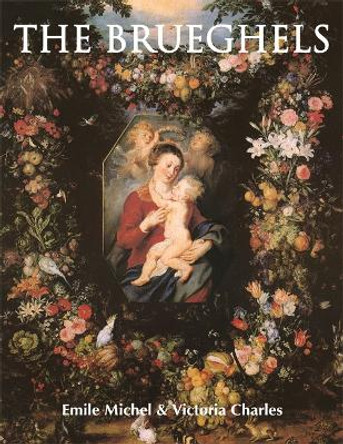Description
Unlike the work of his contemporaries Rubens and Caravaggio, who painted on a grand scale, seventeenth-century Flemish painter Jan Brueghel's tiny, detail-filled paintings took their place not in galleries but among touchable objects. This first book-length study of his work investigates how educated beholders valued the experience of refined, miniaturized artworks in Baroque Europe, and how, conversely, Brueghel's distinctive aesthetic set a standard-and a technique-for the production of inexpensive popular images.
It has been easy for art historians to overlook the work of Jan Brueghel, Pieter's son. Yet the very qualities of smallness and intimacy that have marginalized him among historians made the younger Brueghel a central figure in the seventeenth-century art world. Elizabeth Honig's thoughtful exploration reveals how his works-which were portable, mobile, and intimate-questioned conceptions of distance, dimension, and style. Honig proposes an alternate form of visuality that allows us to reevaluate how pictures were experienced in seventeenth-century Europe, how they functioned, and how and what they communicated.
A monumental examination of an extraordinary artist, Jan Brueghel and the Senses of Scale reconsiders Brueghel's paintings and restores them to their rightful place in history.
About the Author
Elizabeth Alice Honig is Associate Professor of European Art at the University of California, Berkeley, and the author of Painting and the Market in Early Modern Antwerp (1999).
Reviews
"Jan Brueghel and the Senses of Scale presents a long-awaited and much-needed analysis of a critical yet neglected painter. What Elizabeth Honig offers in this study fills a crucial lacuna, as no one else has redressed the relative absence of Jan Brueghel in period accounts, even in the standard surveys of Flemish painting. This is thoughtful, critical, and revisionist art history that challenges assumptions about the importance of period style and pictorial categories."
-Larry Silver,author of Pieter Bruegel
"A refined, multivalenced study of how Jan Brueghel's work can be interpreted for size, subject, and patronage. . . . Highly recommended."
-A. Golahny Choice
"[Honig] has made the most historically cogent and pictorially compelling argument that can be made for Brueghel's work. To read the book is to see his strikingly different kind of ambitious painting with new eyes and to consider that historic painting can differ from the unique iconic masterpieces one looks for made by masters both old and new."
-Svetlana Alpers Key Reporter
"A masterful treatment of the artist that also manages to make an important contribution to the study of the philosophy, taste and collecting habits of late sixteenth- and early seventeenth-century collectors."
-Louisa Wood Ruby The Historians of Netherlandish Art
"Honig's text is a thoughtful, wide-ranging, and articulate presentation of a relatively unfamiliar aesthetic, that of miniaturization."
-Nina E. Serebrennikov Renaissance Quarterly
"A significant re-evaluation of the paintings of Jan Brueghel."
-Iain Buchanan Burlington Magazine
"Honig's core claim, that Jan Brueghel's art must be understood in relation to an aesthetic of smallness that elicits close viewing, is beautifully supported by the book's outstanding production values; high-quality illustrations, including carefully selected details, enable the reader to look with Honig and be guided by her practiced eye."
-Lisa Rosenthal Art Bulletin
Book Information
ISBN 9780271071084
Author Elizabeth Alice Honig
Format Hardback
Page Count 288
Imprint Pennsylvania State University Press
Publisher Pennsylvania State University Press
Weight(grams) 1497g
Dimensions(mm) 254mm * 229mm * 27mm






